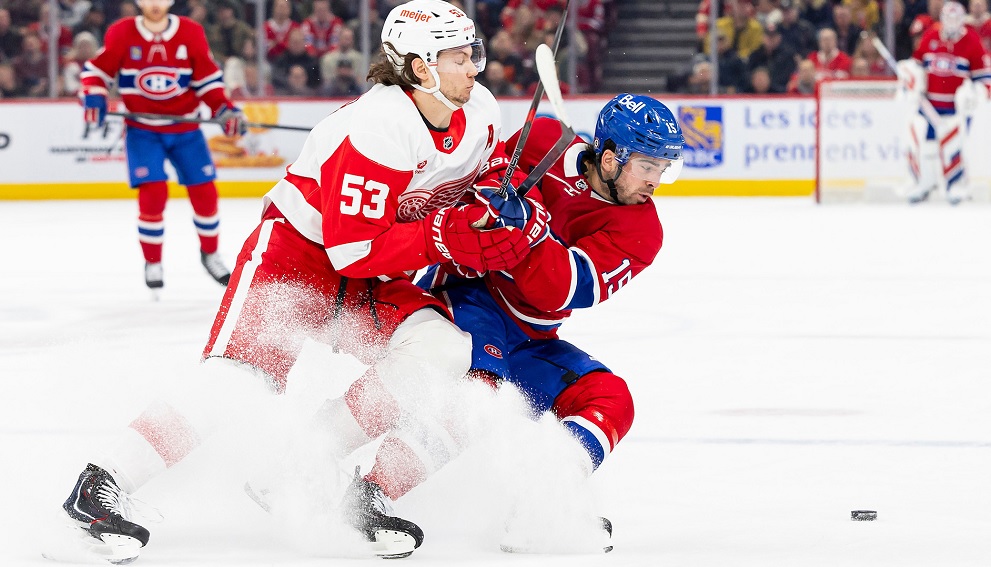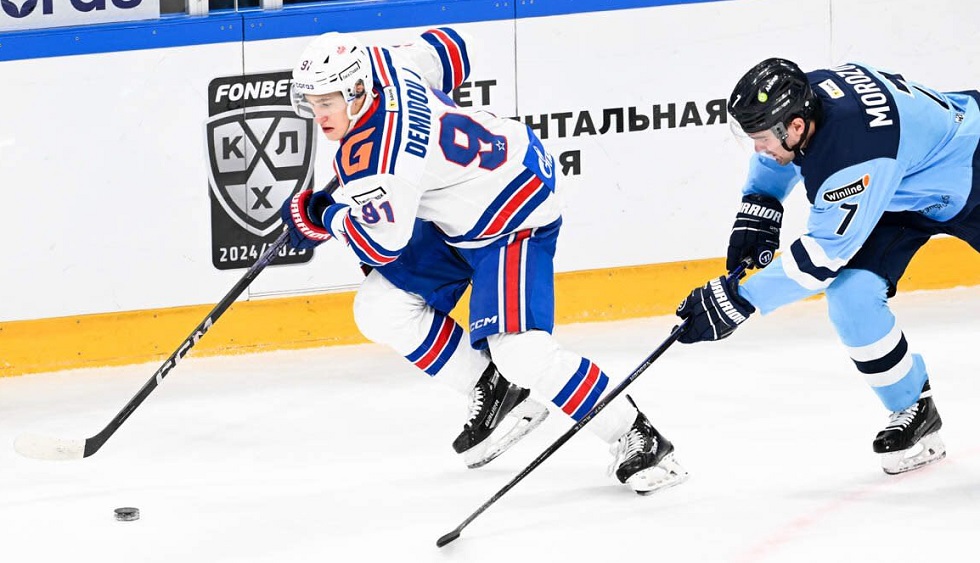HabsWorld.net --
As a lifelong fan on the Montreal Canadiens this article was incredibly difficult to write. Trying to saying anything positive about the Boston Bruins, a team I have grown up hating, took a lot of willpower. However, with the recent play of the Boston Bruins during the 2010-11 season and beyond they kind of deserve it. While their players have done so things that rubbed me the wrong way they have played an effective brand of hockey that got them a Stanley Cup Championship in a very impressive fashion, including three game seven victories. The Bruins also present a different dynamic to the team building section of this series, one that is different from all the other teams reviewed and therefore highly important to take a look at.
Position during the 2010-11 NHL season – conference (league):
3(8)
Record during the 2010-11 NHL season:
46-25-11
What method did they use to build their team?
The Bruins are one of the more interesting champions of the past decade. They do not have a star on that team the way the Penguins had Crosby or the Blackhawks had Toews and Kane. Instead the Bruins won the 2010-11 Stanley Cup because they were the best overall team in the running and they had an excellent team dynamic with plenty of depth to fill out their roster. How was this depth accrued? A large portion of the Boston Bruins was made up of top draft picks as is now a key to any team winning the Cup in the salary cap era of the National Hockey League. The Bruins made one trade in particular that while it hasn’t fully developed yet has already been important to their championship season. This trade has become one of the most speculated in hockey the past couple of years and one that haunts the fanbase of the Toronto Maple Leafs. That of course would be the trade that brought former Bruins pick and star Phil Kessel to the Maple Leafs in exchange for at the time two first round picks and a second but now better known as Tyler Seguin, Dougie Hamilton, and Jared Knight. While Hamilton and Knight have not yet started their NHL careers Seguin has already had a fairly solid one including some important contributions to the 2010-11 championship season. This trade was so important because while the Bruins were not one of the worst teams in the league this trade enabled them to draft like one. Another trade that was imperative to the Bruins’ title was the Nathan Horton deal that saw the Bruins not only acquire Horton but key depth forward Gregory Campbell. In exchange the Bruins sent the Panthers defenceman Dennis Wideman, a 2010 first round pick (the Panthers eventually traded down for Nick Bjungstad at 19th), and a 3rd round pick in 2011. Free agency also played a large factor in the Bruins run for the Cup. The best player on the Bruins, hands down is annual Norris Trophy front runner Zdeno Chara. All of the teams that we have reviewed so far in this series acquired their cornerstone player in the draft which is why this Bruins team is so interesting.
Why was this method effective?
Like noted above this method was effective because the Bruins were able to instil a team dynamic within the Bruins that was key to the way they won hockey games. The Bruins played a tough brand of hockey that few would consider pretty but almost all would consider effective, considering what they were able to accomplish. The Bruins were able to find a group of players that complemented each others’ styles and personalities very well and it was clearly reflected in their play which only improved as they got deeper into the 2011-12 playoffs. They also found players with plenty of fight and desire to win; almost all times in the playoffs it is not talent but effort that gets things done. That is why it is so difficult to predict playoff results because it is hard to tell which teams are ready to give what it takes to win the series. The Bruins drafted several character players who are hard workers such as Milan Lucic who not only have scoring talents but can also play tough when they need to. Behind this forward line is a defence that ,while not exceptional in the offensive department, gets the job done in their own end. Behind them up until recently was one of the best goaltenders in the world, at one time considered the number one prior to a season that saw his stock fall in more then one place. That would be goaltender Tim Thomas, who had a rough season in 2011-12 but has been crucial to the Bruins successes in the past. That is why the building of this team has been so effective. They have been able to identify the needs in all of their three positions and come up with a team that was alarmingly deep in all denominations of their roster.
What experience did the General Manager have going into his position?
Peter Chiarelli began his career in hockey as a player for Harvard University. He would later go on to play other places professionally, although nowhere near a major North American or European league. Chiarelli later joined the business side of the sport as a player agent. He would then transition into a job as an assistant general manager with the Ottawa Senators. He would stay in this capacity for two years before leaving the team. In 2006 Chiarelli became the General Manager of the Boston Bruins, originally on a four year term. He has since had his contract extended and looks to be the general manager of the Bruins for years to come.
What can be expected from this team in the future?
The Bruins still have the majority of the team that won the Stanley Cup two years ago. However, many of the important depth players who were key to that run are no longer with the team. One of those key players is former Montreal forward Michael Ryder. Without Ryder it is doubtful the Bruins would have even gotten past the Canadiens in the first round of the 2010-11 playoffs as they struggled to vanquish the 8th seed in 7 games. The team really missed Ryder in the first round against a Capitals team who seemed to just want it more then the Bruins. But the important pieces of the Bruins still remain and therefore they will still be very competitive. One thing the Bruins still certainly are limited by is the fact that they have virtually no cap room going into this season, mostly because of goaltender Tim Thomas who decided he was going to sit out for the season and thus continues to be a cap hit for the team due to his 35+ status. This gives them little flexibility and restricts who they can call up from the minors. Another long run is not completely out of the question but the Bruins probably need a few more pieces and some secondary scoring before that becomes a reality.
How was the core of the team put together?
The core of the Boston Bruins is different from most other teams. The team is focused more around a team dynamic and less about superstars then other teams and therefore the core of this team is inflated in comparison. The core of the Boston Bruins consists of 6 forwards, 4 defencemen and 2 goalies. Yes, two goalies, a luxury that few other teams in the National Hockey League have, some which have no goaltenders in their core like the Chicago Blackhawks (link to their article below). The forwards are David Krejci, Milan Lucic, Patrice Bergeron, Nathan Horton, Brad Marchand and Tyler Seguin. On the backline the core consists of Zdeno Chara, Johnny Boychuk, Dennis Seidenberg and Adam McQuaid and finally between the pipes Tim Thomas and Tuukka Rask.
Krejci was drafted 63rd overall by the Bruins in 2004 while Lucic was drafted 50th overall in the 2006 draft, joined by Marchand who went 71st overall. Bergeron was drafted 45th overall in the 2003 NHL Entry Draft. Nathan Horton was acquired in a trade with the Panthers in exchange for Dennis Wideman, the 15th overall pick and a 3rd round selection. Seguin was drafted 2nd overall in the 2011 draft. On the blueline Zdeno Chara was acquired as a UFA from the Ottawa Senators. Seidenberg was traded to the Bruins in a deal that included Byron Bitz. Boychuk was traded to the Bruins in exchange for Matt Hendricks while McQuaid was acquired in exchange for a 5th round draft pick. As for the goaltending Tim Thomas signed with the Bruins from Jokerit of the Finnish league and Tuukka Rask was acquired in a trade with the Maple Leafs that saw Andrew Raycroft come back Toronto’s way.
Average Age: 27.8
Average time players have spent with the team: Since 2009
The Bruins, like mentioned in the opening and throughout built their team in a very unique fashion. One of the most impressive things that was outlined in this article about this Bruins team is that their blueline is almost entirely consistent of players who were acquired via trades that cost the Bruins very little and free agency. This is very different from all the other teams reviewed in this series and reflects very well on the Bruins’ management staff. In fact this championship may have been won more in the boardroom then any of the others in the past decade. The Bruins staff did an exceptional job of talent evaluation and it ended up earning them the biggest prize possible for a team in the National Hockey League, a Stanley Cup. The Bruins may not be the most pretty team in the NHL, but it really doesn’t matter as long as they win.

